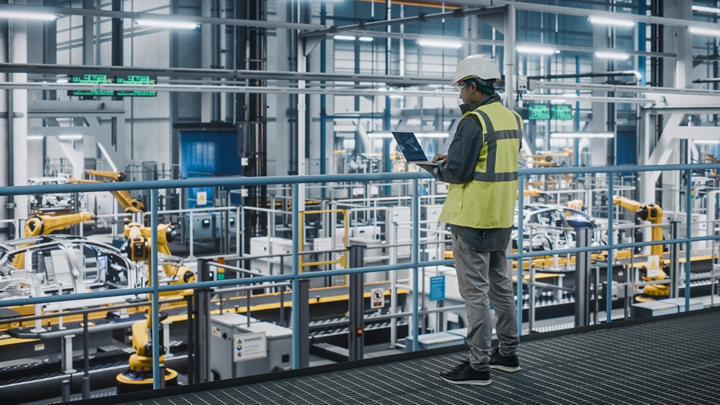The importance of understanding your manufacturing environment: IP ratings

iPhone users can dive to a maximum depth of six meters for up to 30 minutes with the new iPhone 15, rated IP68. Ingress Protection (IP) ratings, provide valuable information about the protection level of an electrical enclosure against the intrusion of solid objects and liquids. Here, David Strain, technical director at systems integrator Technidrive explores the importance of IP ratings to protect equipment from common environmental hazards in industrial applications.
IP ratings were introduced to standardise the performance expectations for electrical enclosures and mechanical casings. It's essential to understand the IP rating system established by the International Electrotechnical Commission (IEC), as it provides a clear indication of industrial equipment’s ability to withstand environmental factors, particularly water and dust.
IP ratings are composed of two digits, each establishing a specific level of protection. The first refers to the protection against solid objects, while the second indicates the protection against liquids. Devices with higher IP ratings, like IP65 or IP66, offer better protection against dust, rain and even corrosive substances, safeguarding equipment and ensuring uninterrupted functionality. However, higher IP ratings do not necessarily mean better protection. For example, an IP rating of 68 provides protection against dust and continuous immersion in water, but it might not be suitable for areas with high humidity levels because it may not protect against condensation.
The degree of protection against solid contaminants is indicated with a number from zero to six. A higher number indicates a higher level of protection against finer contaminants. In the case of the liquids, the degree of protection against ingress is indicated with a number from zero to nine. However, for liquids, higher numbers do not necessarily indicate the component's ability to withstand a larger amount of water.
If you are unsure about what IP rating your equipment requires, an expert system integrator can assist you and recommend the most suitable solution tailored to your business needs. Many industrial sectors require components with IP ratings, including marine, food processing, pharmaceutical manufacturing and the agricultural sector. In fact, almost all industrial settings will experience some risk of ingress — particularly if the environment in which it operates is outdoors or in an environment subject to water, heat or dust.
In these cases, their electrical components must be able to withstand solid contaminants, water splashes and intensive cleaning. Motors and gears have specific IP ratings because these are also affected by solid and liquid contaminants depending on the environment conditions. For example, a gear motor with an IP54 rating is dust proof and provides protection against water splashed from all directions.
In the case of the water treatment industry, operators should note that electrical systems will react differently to freshwater than to salt water, leading to more extensive corrosion. Consideration must also be given to how often exposure occurs and where the system may be submerged. Even in some situations, previous testing may be required to ensure that an IP rating is appropriate for a particular industrial application.
As you wouldn't take underwater photos with an iPhone without checking its IP rating, similarly, ensuring that your plant equipment can function optimally in its environment is fundamental. Water and dust resistant products are essential for ensuring the continued productivity of manufacturing equipment and processes. To prevent component failures and unplanned downtime, manufacturers need to understand IP ratings to choose a suitable device for their business.
For further information about systems integrator Technidrive, visit the website or speak to a specialist today by emailing sales@technidrive.co.uk.
Comments (0)
This post does not have any comments. Be the first to leave a comment below.
Featured Product

